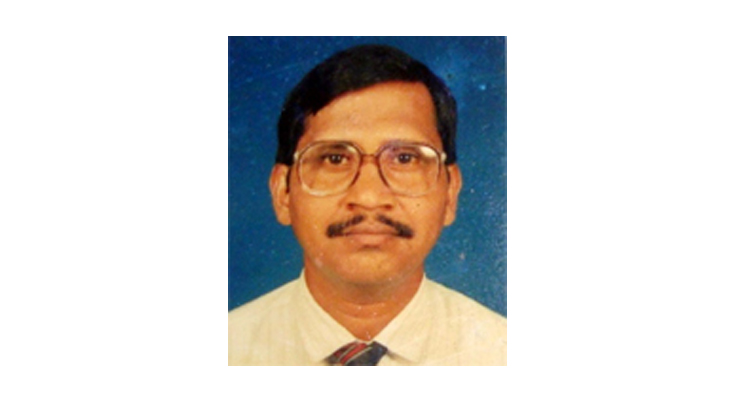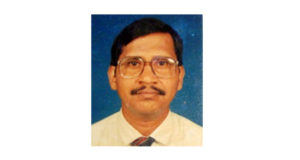Arunachal Pradesh: Before I got the opportunity to enrich my knowledge on our cultural tradition (Indian tradition) through the reading of books I had already gained background knowledge of it. Later by reading books I simply organised my knowledge logically, comprehensively, sequentially and refined my understanding. The background knowledge was acquired from an informal process of socialisation at home, in the village, through interaction with peer groups and kinspersons, by observing and participating in events and through interaction with people in the society at large; and the territorial extent of my society then was a social space of around 10 -11 villages. I along with my friends had the freedom of attending drama, yatra (village theatre) and other cultural events with permission from parents. I had the opportunity of listing to grand maa tales that not only entertained me during bedtime but developed a sense of emotional attachment for elders, sowed the seed of imagination, helped in growing the idea that I am one among many others- human, animals, plant, etc. in the world; thus acquainted with diversity and imbibed the essence of human values.
It is clear by now that I was born in a village and grew up in the village ambience. In my village and in surrounding villages almost all the annual festivals were organised even during that time. Needless to say, I watched Durga Puja, Basanti Durga Puja, Kali Puja, Raas, Makar Sankranti, Dol Yatra, Siva Ratri, Lakshmi Puja, Ratha Yatra since my childhood. In schools, we used to celebrate Ganesh Puja and Saraswati Puja with enthusiasm. At home in every Samkranti havan is instituted. In Kartik month akhanda puran path (uninterrupted reading of epics like Ramayan, Mahabharat, Bhagabat, etc.) was a regular feature till the death of my father in 1981. I used to participate in all the religious institutions with the purification of the body by bath and wearing new clothes and with devotion, though its intensity than was an eyewash. Another point which I would like to mention is that I learnt very little about our cultural heritage from the school curriculum, which in fact had included stories, songs, etc. Largely informal socialisation and my subsequent reading due to my interest in the subject helped me to know what I know today about our culture.
Alas! today informal socialisation is celebrated in the absence of parents; with housemaids when both parents are working and with electronic media even in the presence of parents. Children learn about pizza, McDonald, kinder joy, Mickey Mouse, Barbie and beauty tips, and nurture the glory of sense gratification; but not learn or show interest in our cultural heritage and to live in it.
This is another story and I am afraid I am diverting the centrality of my focus to peripheral tips.
Coming back to my point I would like to submit that I learnt about ten incarnations (avatars) during my informal socialisation. As I grew up, particularly after VIIth standard when I read about Darwin’s theory of evolution, I doubted the idea of incarnations, but at the level of sub-consciousness, I used to feel a conflict between reasoning and faith. I did not get any answer to address the conflict till Xth standard when I read a small booklet, I do not remember its name at present, where ten incarnations were explained in the light of the evolution of life and civilisation.
Matshya avatar was presented as the symbol of origin of first life in the form of a fish. Then life shifted to an intermediate zone of water and land – in the form of amphibian- represented by Kurma/ Kacchyap (tortoise) avatar, followed by the shifting of life to land and evolved to animal forms as represented by Varah (Boar) avatar. The fourth incarnation is Nrisingha (human-lion form) marked by evolution from animals towards homosapien. Thereafter life took a different line of evolution with Vaman avatar, representing nomadic life as symbolised by leaf-made umbrella used by Vaman. From this stage, a human civilisation evolved through old stone age symbolised by the weapon axe of Parashuram, new stone age of hunting-gathering stage symbolised by bow and arrow used by Rama, and pastoral and agricultural stage during Krishna and Balaram. The weapon of Balaram is a plough and Krisna is popular as a cowherd.
The ninth incarnation is Buddha, meaning knowledge. Buddha discarded all the dogmas, emphasised on cause and effect logic, a scientific approach to knowledge and taught Vipassana, the mechanism of looking inward. His middle path is a negation to extremes of indulgence and austerities, i.e. a path that suggests not going for too much material quest or too much for its discarding. The spirituality was embodied in Vipassana guiding the material necessity of individual and society. The last incarnation in the Hindu belief system is the Kalki, representing Kali Yuga and symbolising destruction. It is the age with the dominant idea around material supremacy with appealing to sense gratifications from outer objects. It draws our attention away from the inward movement towards self-realisation- a permanent state of reality and divine happiness to impermanence, shelter on outer means of short-lived demonic happiness, misery and self-denigration. We are unfortunately on the threshold of knowledge and destruction.
The Kalki, the tenth incarnation epitomises the stage of destruction. What does it mean? Is it complete annihilation of humanity and human civilisation? Is it complete destruction of the planet Earth? I am not sure as to the nature and extent of the destruction. Its answer can be sought from past indications. Let me ask two questions and try to answer them with reference to the past to understand the notion of destruction. However, a few clarifications are in order.
It should be made clear that the phenomena of creation and destruction are an ongoing process of the reality; it happens at every moment, now and then, with regard to an individual, structure of an individual, community, nation and universe encompassing both biotic and abiotic world, and in temporal and spatial dimensions. The process occurs in the one-millionth part of a second, in hours, days or over years and centuries. It happens in our cells, in the family, society, in the context of a nation and world. Both actions can happen simultaneously like transformation in a cell or atom or may take many years like natural birth and death of a member in the family. Birth and death of different persons may happen at the same time or at an interval of different members in the family.
Characterising destruction in relation to creation let me return to the questions. The questions are 1. Why did great civilisations, occidental civilisations like Greece, Athens, Egypt decline (destroyed)? 2. Why do oriental civilisations like China and India are the oldest living civilisations?. In other words, why did oriental civilisations did not decline over the years? Decline here means destruction. By decline or destruction of civilisation I do not mean complete annihilation of people and civilisation, but drawing on past experience related to Greece, Athens, etc. I would like to present the meaning of destruction/decline as a sort of decline in value, progress, achievements, etc. As we know Greek civilisation declined but not its people.
Returning to the Kalki avatar, it is an epitome of the destruction of civilisation with a perceptible consequence on a large scale. This deduction is made on the basis of the fact that the civilisation is bigger and more spread across countries than earlier Greece or other country-specific civilisations. In our contemporary time, civilisation displays a cross-country third space on the plane of material supremacy.
Let us see what the essence is at the core of oriental and earlier occidental civilisations. It is a well-known fact that in Athens a weak boy child was put to death as they valued physical strength as the standard of their national character. The ideological basis of these civilisations was built upon the principle of accumulation and possession of material wealth. Individual, individual achievements and individuality were celebrated over the sense of belonging to the community. Contrarily, oriental civilisation has been maintaining a balance between spiritual and material aspects of life which in recent years have been imbalanced in favour of material desire. Seers and philosophers did not preach the ideology of accumulation, possession and selfishness. We were taught our commitment to the precept of vasudhaib kutumbakam (universal kinship), ethics of sharing-live and let live, the merit of self-sacrifice for the cause of family/community/nation, to the ideology of minimisation of wants. We were expected to believe in the notion of ‘community of being’ and follow the ideology of a symbiotic relationship with nature. Watering by spirituality through its components of values, ethics, feelings for humanity, ideological commitment and of the likes prevented the crashing of our civilisation under the burden of martial supremacy.
But alas! we live in a time where material life is glorified over the spiritual quest. Inorganic food takes precedence over organic ones though we know its effect. Junk and fast food are inalienable in our food basket, though it does not boost up immunity. We have been reduced from producers to consumers of wasteful things. We consume less than we gather, thereby and leading to stockpiling of wastes of valuable materials. The sustainability is at stack due to wasteful consumerism. The human was different from animals because he/she can think. Now a few think for others and others have almost stopped thinking on the face of visible attractions of T.V., smartphone, cinema, and other media along with a host of readymade means. It is not out of context to state that even as students we apply all sort cut means including cheap and erroneous notes available in the market without reading standard books. In the face of electronic media, reading habit is hard to be found among students. The thinking element through self-study is replaced by dependence on tuition and practice of parrot learning. Our interactive space has shifted from larger social and territorial space to electronic and drawing room/bedroom confinements. We celebrate the ideology of accumulation, possession, selfish interest, and individualisation over the practice of sharing and sense of community feeling. Strangely, we invent gadgets that keep out rooms cool but increases global warming. Violence, hatred, jealousy, frustration, depression, suspicion, revengeful mind and much such negativity have occupied our mind space. We have been practically reduced to skeletons without lifeblood, the spiritual meaning to life. The skeleton cracks and dismantles bereft of lifeblood. The Kalki epitomises material supremacy over spiritual essence.
But how long material supremacy will rule over without the base of spiritual strength? It has to go today or tomorrow; the balance between spiritual and material needs will be restored with the destruction of imbalance favouring material indulgence. The Kalki will usurp new era over the destruction of material supremacy for which it stands. COVID-19 has pressed a restart button and perhaps a signal to mend our habits of wasteful consumption, mass production, individualism, maximisation tendency and the like.
(The writer M. C. Behera is Professor at Arunachal Institute of Tribal Studies and Rajiv Gandhi University, Itanagar, Arunachal Pradesh can be contacted email:mcbehera1959@gmail.com; (M): 9436252229)



